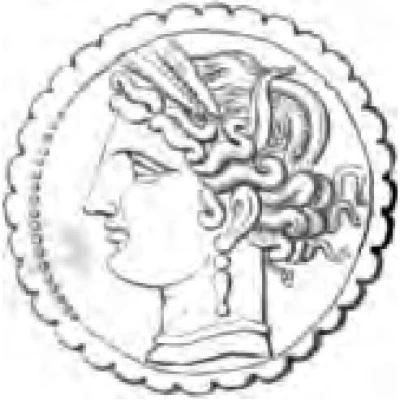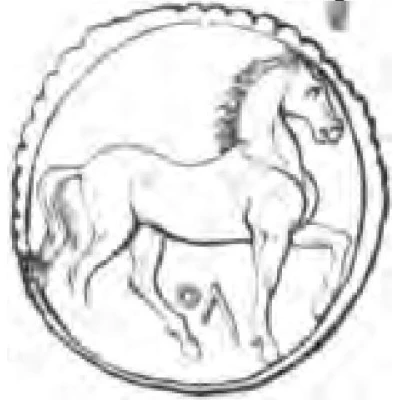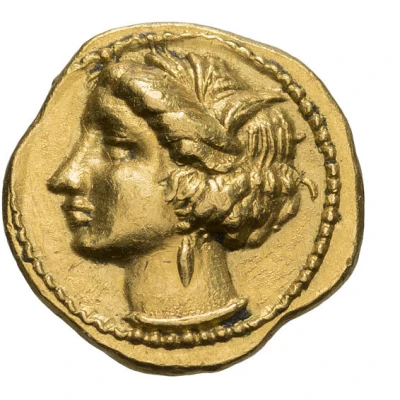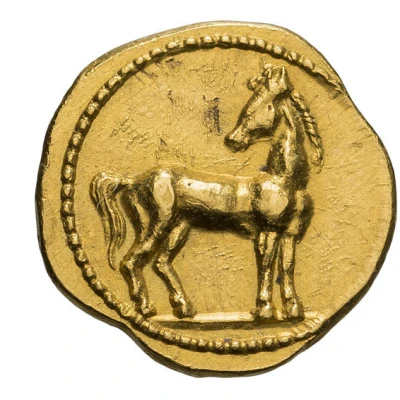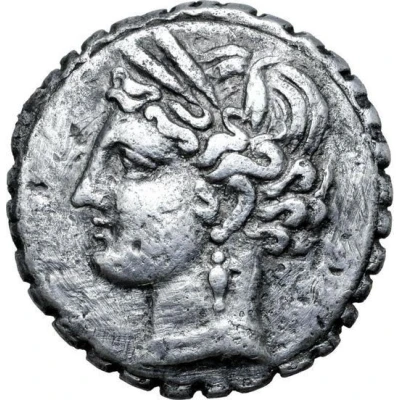
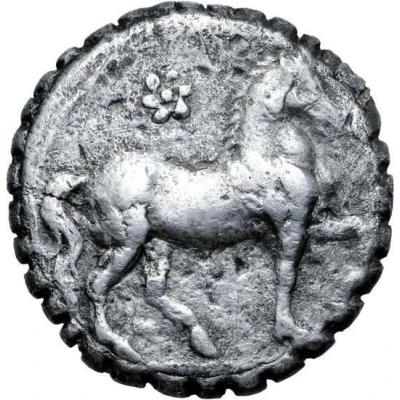

© Roma Numismatics Limited
Dishekel 200 BC - 146 BC
| Silver | 12.76 g | 25 mm |
| Issuer | Carthage (Zeugitana) |
|---|---|
| Type | Standard circulation coin |
| Years | 200 BC - 146 BC |
| Value | 2 Shekels |
| Currency | Shekel |
| Composition | Silver |
| Weight | 12.76 g |
| Diameter | 25 mm |
| Shape | Round (irregular) |
| Technique | Hammered |
| Demonetized | Yes |
| Updated | 2024-10-09 |
| Numista | N#333125 |
|---|---|
| Rarity index | 100% |
Reverse
Horse standing right, left foreleg raised; flower above.
Interesting fact
The Dishekel coin was used as a form of currency in the ancient city of Carthage, which was located in present-day Tunisia. The coin was made of silver and weighed 12.76 grams, which was a significant amount for a coin at that time. Despite its weight, the Dishekel coin was widely used in trade and commerce throughout the Mediterranean region. Its design featured the image of a goddess, possibly Tanit, who was an important deity in the Carthaginian pantheon. The Dishekel coin was also inscribed with the name of the city in Phoenician characters, which was a unique feature for coins of that time period. Overall, the Dishekel coin is an important artifact that provides insight into the economy, culture, and religion of ancient Carthage.
